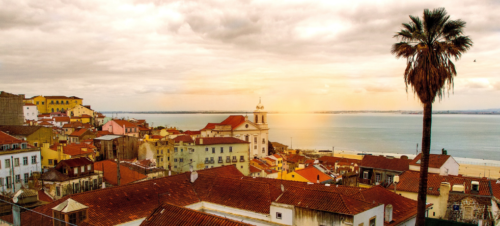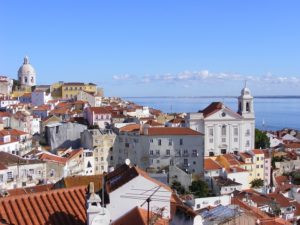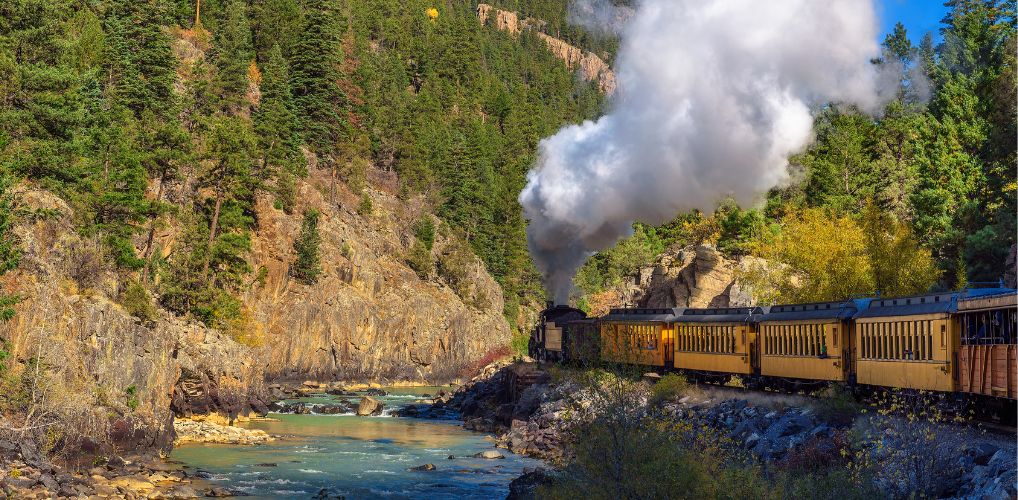 If you are looking for a romantic city, go to Lisbon and get the feeling that time has never passed…
If you are looking for a romantic city, go to Lisbon and get the feeling that time has never passed…
For its architecture that has been kept intact even though it was terribly hit by an earthquake in 1755, and for its easy-going people who are patient and not in a hurry.
Your stroll will begin at the Plaza do Comercio, on the River Tagus.
From there, you can go towards the water and the port or into the city to visit the austere church and the history opening up before your eyes.
So now it is about time that someone gave curious knowledge seekers a curious view of Lisbon.
Table of Contents
Music Everywhere in this Romantic City
Everywhere you go, you are surrounded by music. In the streets you can hear the music from the birds, when shopping the piped in music accompanies you, so why not delve into the music which is so typical of Portugal and in particular, Lisbon with the Fado.
Discover Lisbon’s Heart – Fado
 Fado, which means destiny, is thought to have come from the nostalgic ballads sung on long journeys or from the Lundusongs of the black slaves from Brazil.
Fado, which means destiny, is thought to have come from the nostalgic ballads sung on long journeys or from the Lundusongs of the black slaves from Brazil.
It was usually sung in brothels or not very recommendable pubs because its lyrics talked about inner forbidden passions.
But thanks to Amalia Rodrigues, who has been compared to such well known singer like Ella Fitzgerald or Edith Piaf, the Fado has become internationally known.
Amalia used poems from the greatest Portuguese poets, starting from the anthology of medieval music up to now, wearing the classical dress and black shawl to add the finishing touch.
The Fado, initially accompanied by the classical guitar and by the twelve string lute and sometimes by the saxophone, is an intense sound with so much feeling behind it.
Who would pass up the opportunity to spend a night lit by candlelight, soaking up history through music?
And one may ask themselves, how do we know where to go to listen to the best of Fado?
Alfama, the Heart of this Romantic City!
In Lisbon there are quite a lot of places. Go to the tourism office and get a good street map of Lisbon. Then start with The House of Fado and Guitar, a sort of mini-museum, so you can read the history and come into contact with it for the first time. It is found in one of the most typical neighborhoods called Alfama.
 There, in Alfama, if you just roam about the streets after dinner, the sound will reach your ears without you even having to go look foot it.
There, in Alfama, if you just roam about the streets after dinner, the sound will reach your ears without you even having to go look foot it.
Or even better, visit the house where Amalia Rodrigues lived and discover her dresses and jewellery.
Or head to the Neighbourhood da Mouraria, old Moorish area of Lisbon and the cradle of Severa, the first mythical Fado singer.
And before you go sightseeing in other parts of Portugal like Porto, Fatima, Faro or Albufeira, go into a record shop and nosey around looking for the latest Fado singer such as Camane or Misia.
 Lisbon is a relaxed city, full of friendly folk who make the effort to stop and talk. But their city was falling into decay and renovation became a priority.
Lisbon is a relaxed city, full of friendly folk who make the effort to stop and talk. But their city was falling into decay and renovation became a priority.
Recent years has seen Lisbon begin to clean up its act. Hosting the 2004 European Football Championships focused the city and brought about an exiting new era.
For years Lisbon sat awash with building sites and rubble, eager to regain its status as one of the major calling ports of Europe.
Downtown Lisbon was stuck in a time warp. Tight, cobbled streets were a throwback to the 18th century, a million miles from the ultra-modern, cosmopolitan capitals of Europe.
Today, Lisbon is at the dawn of a bright new age and keen to promote itself in a new world of tourism.
The devastating earthquake of 1755 led to new town planning, much of which exists to this day. Urgent reconstruction was necessary to keep Portugal’s capital up and running. A new infrastructure heralded the start of a new era.
The Praca do Comercio
The Praca do Comercio sits at the edge of the waterfront.
The pretty square attracts the pigeons en masse and looks up to a magnificent archway.
The perimeter is laced with retail stores; busy shoppers dart from one to the other, seeking their bargains.
The square provides a focal point for much of the local community.
The folk gather and exchange conversation whilst children dance and play, adding to the general din.
The delightful smell of cooking emanates from the surrounding restaurants and drifts enticingly across the square, inducing your hunger.
Opened in 1901, the Elevador de Santa Justa is an outdoor cast-iron lift. Catering exclusively for those with a head for heights, the elevator provides unparalleled views of the streets beneath. The tiny people below scurry around the busy backstreets, all with somewhere to go.
East of the city, Alfama is a legacy of Moorish times, retaining much of the old architecture. Following Christian victory in the religious wars, the Romanesque cathedral was built on the site of a mosque in 1147.




